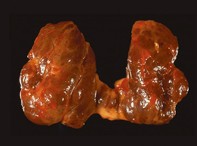Peer Reviewed
Feature Article Endocrinology and metabolism
Thyroid enlargement: a more direct approach to investigation
Abstract
Patients routinely undergo a battery of expensive blood tests and imaging modalities when thyroid enlargement is detected but not all of these are necessary initially. A logical care path can reduce costs and provide reassurance for many patients.
Key Points
- Investigations for thyroid enlargement should be restricted to those that will directly influence management of a particular patient’s problem.
- Many patients with thyroid enlargement experience significant anxiety. A logical care path provides them with earlier reassurance and also reduces costs.
- An assay of serum TSH levels should be on the list of initial investigations for all patients presenting with thyroid enlargement.
- Ultrasonography should not be the first investigation for a patient presenting with thyroid enlargement, but it does have management value in certain situations.
- Asymptomatic patients with a diffuse goitre who are clinically and biochemically euthyroid can be spared imaging and antibody assays altogether. Many can be managed with reassurance and follow up, including annual TSH measurement.
- Suppressive treatment with thyroxine is effective in reducing the size of some diffuse, nontoxic goitres. However, its value in multinodular goitres is questionable.
Purchase the PDF version of this article
Already a subscriber? Login here.

